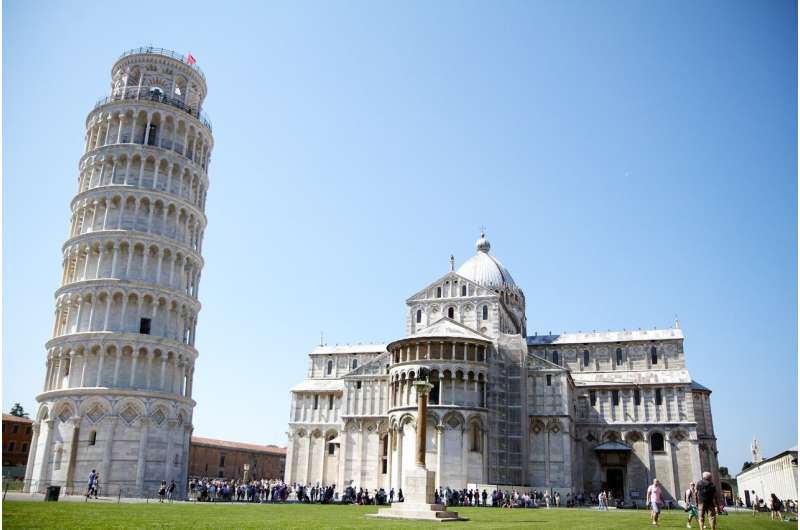January 10, 2020 report
Satellite test shows objects in space fall at a rate to within two-trillionths of a percent of each other

A team of researchers affiliated with several institutions in France and one in the U.S. has found that objects of different mass dropped in space fall at a rate within two-trillionths of a percent of each other. In their paper published in the journal Physical Review Letters, the group describes their satellite-based physics study and what they learned from it.
Most everyone has heard the story of Galileo dropping two different sized cannon balls from the Tower of Pisa in the 17th century to demonstrate his theory that in the absence of air resistance, two objects will fall at the same rate. Einstein later refined the theory and added it to his Theory of General Relativity. Since that time, many people have tested the theory, and it has always been confirmed. Still, some physicists believe that there are bound to be exceptions to the theory because of the disconnect between general relativity and quantum mechanics. In this new effort, the team in France devised an experiment to measure two objects dropping together for two years—specifically, two chunks of metal in a satellite—to see if they could spot an exception.
The two chunks of a platinum-rhodium alloy and a mass of titanium-aluminum-vanadium alloy were installed in a device the team called the Twin-Space Accelerometer for Gravity Experiment (T-SAGE), which was on board a satellite with the acronym MICROSCOPE. The satellite was launched into space aboard a Soyuz rocket from the Guiana Space Centre ELS.
The T-SAGE was designed to mitigate anything that might impact the rate of descent of the falling objects, such as sunlight and vibrations. And its accelerometers were highly specialized—they tested the amount of force that was required to keep each of the metal chunks firmly in place inside the apparatus for the entire trip with a sensitivity of 2×10−14 to the Eotvos parameter. The researchers report that the T-SAGE showed that the two objects fell at very nearly identical rates—within two-trillionths of a percent of each other. The measurement was close enough to report that no Lorentz violation was detected.
More information: Hélène Pihan-le Bars et al. New Test of Lorentz Invariance Using the MICROSCOPE Space Mission, Physical Review Letters (2019). DOI: 10.1103/PhysRevLett.123.231102
Journal information: Physical Review Letters
© 2020 Science X Network





















